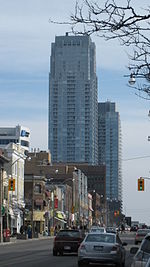Upper Canada College (UCC) is an independent day and boarding school for boys in Toronto, Ontario, operating under the International Baccalaureate program. The college is widely described as the country's most prestigious preparatory school, and has produced many notable graduates. With around 1,200 students, UCC is highly selective, accepting approximately 15% of all applicants in 2019. The school has a generous financial aid program, with more than $5 million being awarded annually to Canadian citizens.The secondary school segment is divided into ten houses; eight are for day students and the remaining two are for boarding students. Aside from the main structure, with its dominant clock tower, the Toronto campus has a number of sports facilities, staff and faculty residences, and buildings for other purposes. UCC also owns and operates an outdoor education campus in Norval, Ontario. It is the oldest independent school in the province of Ontario and the third oldest in Canada.
UCC was founded in 1829 by Sir John Colborne, then Lieutenant Governor of Upper Canada, and modelled on Elizabeth College, Guernsey. After facing closure by the government on more than one occasion, UCC became fully independent in 1900, nine years after moving to its present location. Today, UCC is a fully independent school, with students and faculty from more diverse cultural and economic backgrounds. UCC maintains links with the Canadian royal family through its members or representatives of the monarch, sometimes serving as the college's Visitor and/or on its Board of Governors.










